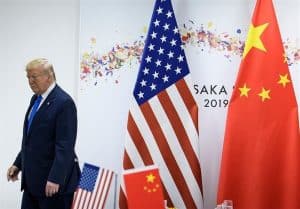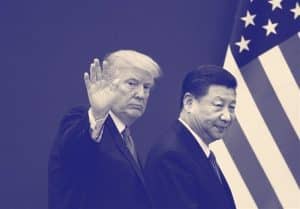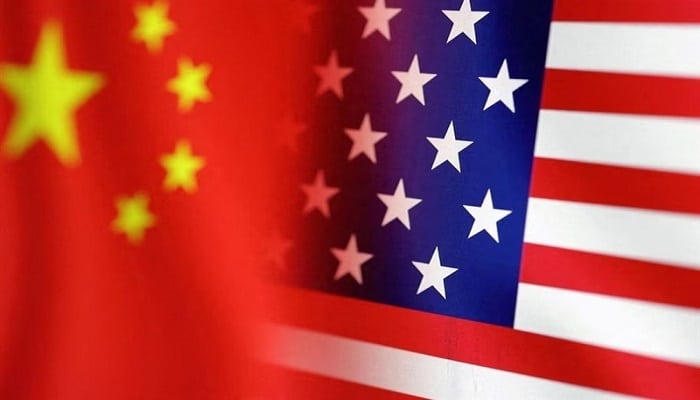PNN – The leaders of China and the United States shake hands in public, but behind the scenes the battle over economy, capital and technology continues, and Turkey is also trying to secure a place for itself in this equation.
According to the report of Pakistan News Network, in recent months political, economic and media circles in Turkey have once again been debating global political blocs, power relations and Turkey’s place in the emerging world order. Some figures in the economic and political sectors believe that Turkey must align itself more closely with the West, especially the European Union.
Another group, especially nationalists such as Devlet Bahçeli, Erdoğan’s partner in the People’s Alliance, argues that the best course is to distance Turkey from the United States and Europe and move closer to China, Russia and India. However, another group of economic analysts believes that Turkey is currently in a complicated and foggy situation, and above all must clarify what position it wants to take in the power struggle between the United States and China.
Mehmet Öğütçü, a former ambassador and diplomat at the Turkish Ministry of Foreign Affairs and now a board member of the Energy Academy in London, as well as a specialist in China studies, has commented on the current economic tensions between Beijing and Washington. He has tried to answer this question: In the long-term rivalry between the United States and China, how should Turkey define its priorities?
Here are parts of this Turkish expert’s political and economic analysis:
The new world, the China–US rivalry, and Turkey’s role
The high-level meetings I held this week in Hong Kong, Shenzhen and Beijing once again showed me that the global balance of power is quietly being reshaped. What matters today is no longer just trade volume, the number of containers or production costs, as in previous periods.
Now, more important issues such as financial architecture, critical minerals, advanced technology, supply chain security and strategic diplomacy are all intertwined. In this world, China has long abandoned its previous role as the global center of cheap manufacturing. We are now facing a different China, a country ready to shape the economic and geopolitical landscape of the new century.

The China–Gulf Energy and Commodity Exchange, which I support as a board member responsible for foreign affairs in Hong Kong, is a version of the Gulf capital model that generated more than 100 trillion renminbi, roughly 14 trillion dollars, in trading volume in Shenzhen.
We can now clearly see that a vast ecosystem is taking shape, covering critical minerals, carbon markets, LNG trade and green financial instruments. This is not just a market; it is the commercial infrastructure of a new global power architecture.
China is currently the world’s largest buyer of oil, natural gas, metals and petrochemicals. Now, in addition to being a buyer, it is also creating financial and institutional architecture. Through a smart and strategic approach, it channels the money it spends on imports back into its own economy.
From cold war to cold peace
Images of handshakes and cooperation messages at the APEC and G20 summits created the impression of warming relations. But in reality, nothing has changed, and the struggle between the United States and China remains at the highest level of strategic confrontation seen in the past half century.
There is no hot or fiery war on this stage. What we see instead is a situation that can best be described as cold peace. Diplomacy is the public-facing layer, and perhaps not even the most important one, because behind the scenes it is technology, supply dynamics and finance that drive the competition for power.

Tariffs and licensing restrictions imposed by Washington since 2017 began under the Trump administration. Now, with stricter measures being reintroduced under Trump, we have entered a new phase.
Let us look at some of the steps the United States has taken against the Chinese economy:
A ban on exports to more than 100 Chinese technology companies.
Additional tariffs ranging from 25 to 245 percent.
Targeted barriers against electric vehicle and battery technologies.
Blocking licenses for chip and semiconductor manufacturers.
But this time the situation is different, and it is clear that China is no longer on the defensive. For the first time, a tough and calculated countermeasure is being implemented.
A new weapon: monopoly over critical minerals
Energy transition, defense systems, space technology, artificial intelligence infrastructure, electric vehicles and chip production all depend on the critical minerals supply chain, which is almost entirely controlled by China. The country holds:
65 percent of global lithium refining,
90 percent of global graphite processing,
73 percent of global cobalt processing capacity,
70 percent of rare earth element production, and
77 percent of global battery cell production.
While a major commodity like oil is regulated through OPEC, critical minerals have no such institution. Beijing alone is filling this power vacuum. The United States is imposing chip sanctions; China is responding by restricting exports of rare chemicals and batteries.
Washington’s defense industry is highly vulnerable in this area. Nearly 80 percent of the rare materials required by the Pentagon are sourced through imports. Clearly, China is holding the bigger stick.
In 2017, 18 percent of China’s total exports went to the United States. Now that share has fallen below 10 percent. The reason is clear: China is no longer dependent on the American market. BRICS is expanding, ASEAN and Africa are rising, and new pipelines with the Gulf and Central Asia are opening.
China’s economy has now found new markets. Beijing’s new doctrine is short and clear: we negotiate and talk, but we continue to fight.
The trade volume between the United States and China reached 575 billion dollars in 2023, the largest bilateral trade flow in the world. Yet this figure has been gradually declining, and mutual direct investment has sharply fallen over the past eight years. US direct investment in China was more than 15 billion dollars in 2016; by 2024 it had dropped to only 3 to 4 billion.
On the other side, China’s investment in the United States was 48 billion dollars in that same year, but today it is less than 2 billion. So trade continues, but trust has vanished. This is precisely what is called cold peace.
The United States wants to stop China’s progress in artificial intelligence, quantum processors, hypersonic missile technologies, 5G infrastructure and the electric vehicle market. But this is not a one-way street.
Because:
46 percent of global patent applications belong to China.
Huawei is the global leader in 5G infrastructure.
China’s annual research and development spending is 350 billion dollars, equal to the entire European Union.
China graduates 1.4 million engineers every year.
The United States still leads in advanced chip and processor design. But China controls the entire supply chain: raw materials, refining, production, assembly and marketing. Sanctions do not push Beijing to the margins; they accelerate domestic technology production.
Where does Turkey stand in this equation?
Turkey is not a passive bystander in this global chessboard. It sits at a crossroads and must understand its geographic advantage. The 2024 figures show the picture clearly:
Turkey–US trade volume: 32 billion dollars.
Turkey–China trade volume: 44 billion dollars.
Imports from China: 40 billion dollars; exports to China: 4 billion dollars.
US direct investment in Turkey: 13 billion dollars.
Chinese investments: 2 billion dollars and rising.
This may look unbalanced at first glance. However, with the right strategy, Turkey can turn this in its favor. Because Turkey is:
A mandatory transit route for the Belt and Road Initiative,
An alternative production base for Europe’s supply chain,
NATO’s Eurasian insurance hub,
An investment gateway for Gulf sovereign funds,
A key player in the Eastern Mediterranean energy and LNG corridor.
At the very moment when the United States must curb its dependence on China, China is seeking a reliable logistics route to Western markets, and Gulf states are pursuing non-energy diversification and industrial investment. Turkey stands at the intersection.
Turkey’s strategic card: critical minerals
Turkey is not just a bridge; it is also a source country. A significant share of the critical minerals often described as the oil of today can be found in Turkey:
70 percent of the world’s boron reserves,
Significant potential in rare earth elements,
New discoveries of graphite, nickel, magnesium, lithium and manganese,
The development of a domestic battery production ecosystem.
The main issue is not extraction but converting these minerals into chemicals and battery cells. Those who enter the value chain will be the winners. If Turkey follows a rational strategy, it can become the trusted partner everyone needs. So far, all the major powers have asked Turkey: are you with us or against us? But now, Turkey must set the table itself — and refuse to play by others’ games.

